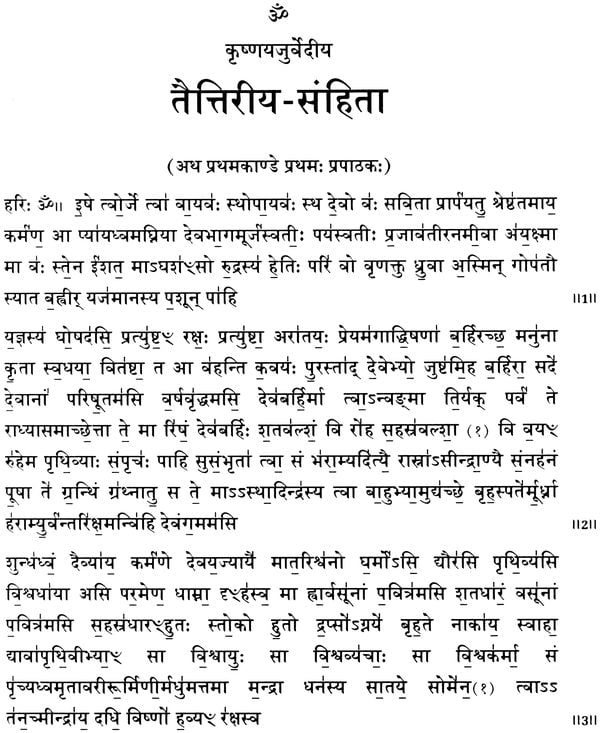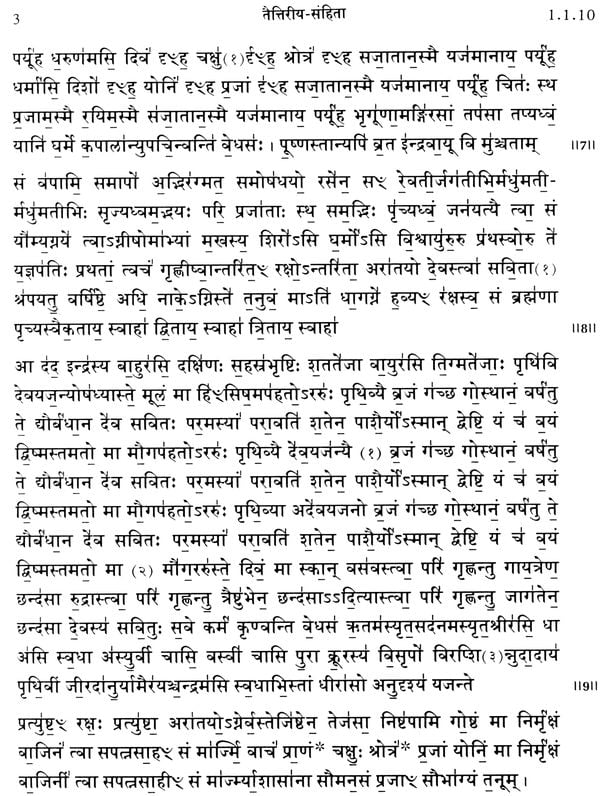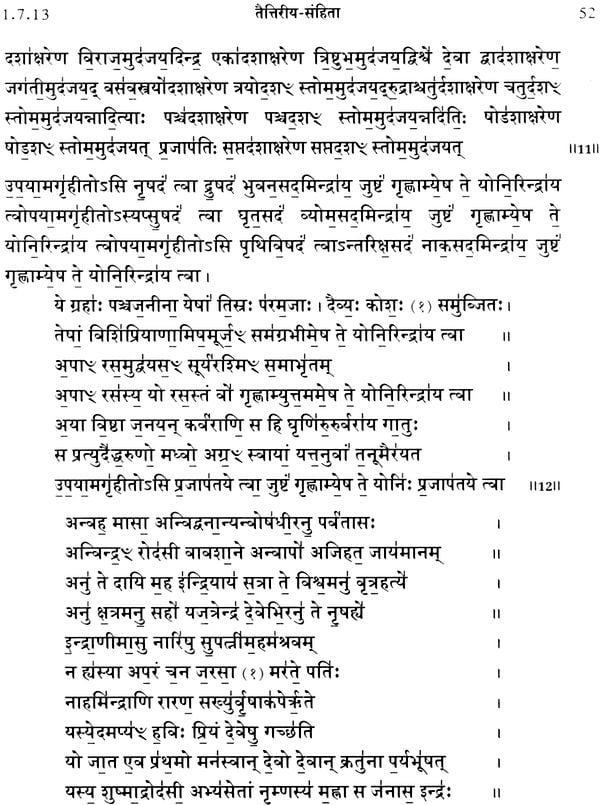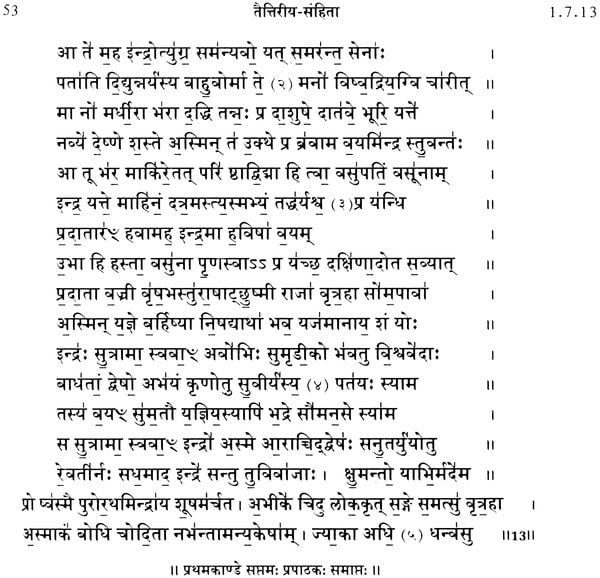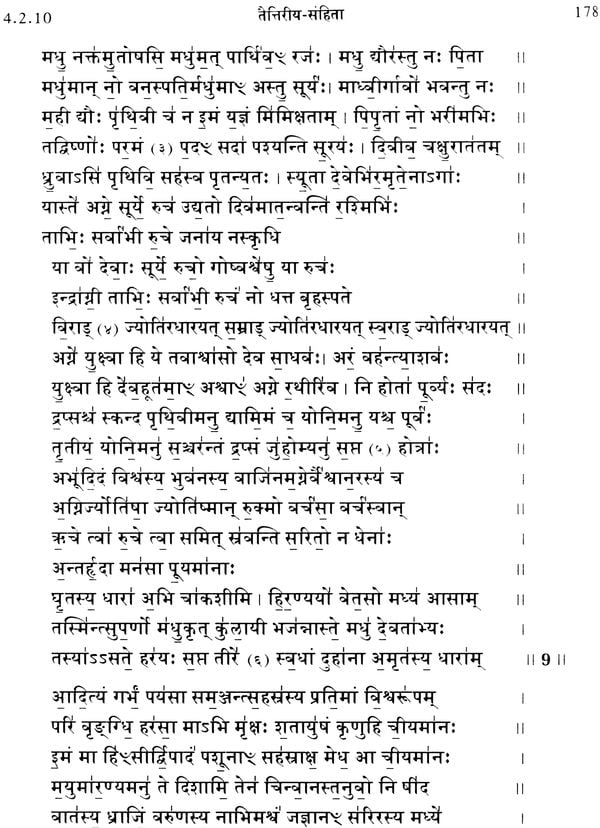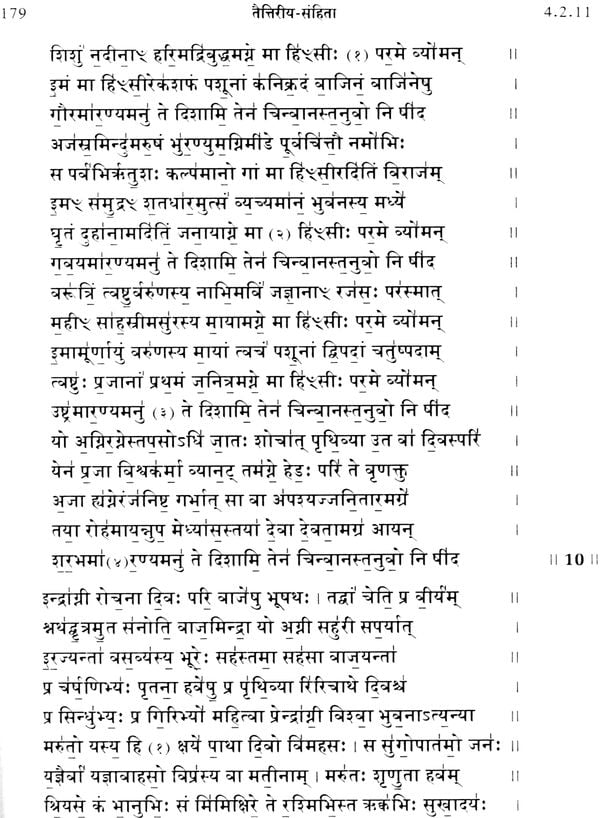
कृष्णयजुर्वेदीय तैत्तिरीय संहिता (समग्रमूलम्): Krishna Yajur Veda Taittiriya Samhita
Book Specification
| Item Code: | NZF746 |
| Author: | R. L. Kashyap |
| Publisher: | Sri Aurobindo Kapali Sastry Institute of Vedic Culture |
| Language: | Sanskrit Only |
| Edition: | 2007 |
| ISBN: | 8179940217 |
| Pages: | 416 |
| Cover: | Hardcover |
| Other Details | 10.0 inch X 7.5 inch |
| Weight | 710 gm |
Book Description
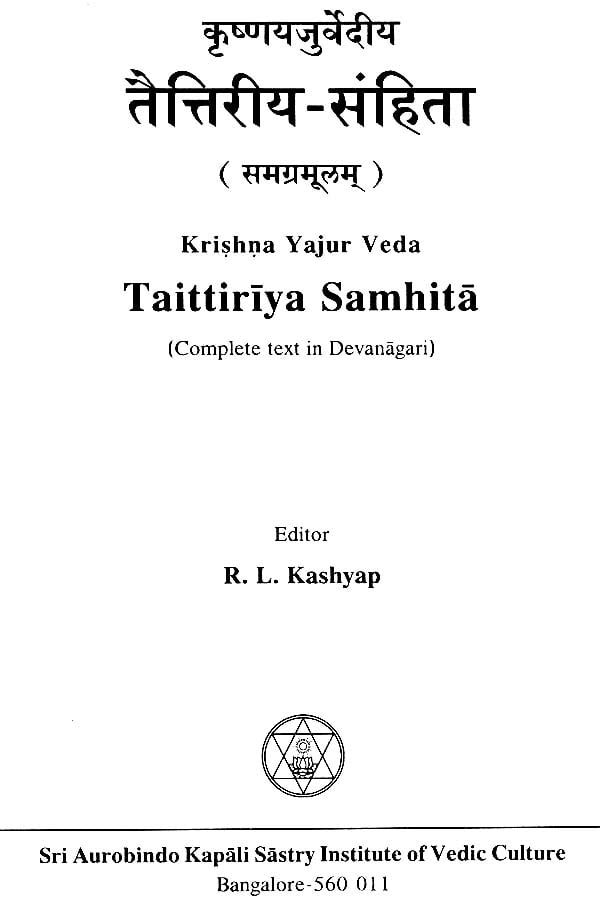
Dr. R. L. Kashyap is Professor Emeritus of Electrical and Computer Engineering at Purdue University, Lafayette, Indiana in USA. He had his Master’s degree from Indian Institute of Science, Bangalore and obtained Ph. D. from Harvard University. He is the recipient of many International awards. Recently he has received ‘Vedanga Vidvan’ award instituted by Maharshi Sandipani Vedavidya Pratishthan (Ujjain), an autonomous body of HRD, Govt. of India and ‘Jnana Keerti’ award instituted by Harsha Kriya Foundation, Bangalore.
He has authored more than 350 research articles of which 220 are published in scholarly journals and the rest were presented at conferences. He has guided above 50 doctoral students.
He has written extensively on Veda. He has to his credit eight major books on the Veda. ‘Why Read Rig Veda’, ‘Secrets of the Rig Veda’, ‘Krishna Yajur Veda Taittiriya Samhita’ (3 Volumes), ‘Exploring the Mystery of Gods’, ‘Rudra mantras’, ‘Essentials of Atharva Veda’, ‘Work Enjoyment & Progress’ are some of his major books.
He is the Honorary Director of Sri Aurobindo Kapali Sastry Institute of Vedic Culture, Bangalore.
We are happy to present this new edition of the complete text of all the seven Kandas of the Taittiriya Samhita of the Krishna Yajur Veda. We are fortunate to have received the blessings of H.H. Sri Vishvesha Tirtha Swamiji of Sri Pejavara Adhokshaja Matha, Udupi, in this endeavour. The blessings of the Swamiji are of great value to us.
The highlights of this edition are the following:
(i) The book is aesthetically pleasing with the text in Devanagari script having a high level of clarity and being easy to read. This aspect is a consequence of the computer-aided data entry and production of the book and not using photocopies of an old book.
(ii) This book is aimed at persons who want to use it for chanting, assisted perhaps by an audio tape. To help these persons, we have included in the beginning a list of well-known mantras and anuvakas such as the Rudra-namaka, Rudra-chamaka, the blessing mantra (shatamana) etc., along with the relevant page numbers.
(iii) We have followed the ancient tradition of not inserting any title for each anuvaka. Assigning for each anuvaka a ritual-based title, often with overtones of violence to animals, is a relatively new practice. Veda mantras can be understood in many different ways. The meaning given to many a anuvaka by persons dedicated to the vedic rituals is often not coherent.
(iv) The Taittiriya Samhita has not only mantras in metrical poetry and prose, but also has explanatory passages called brahmana. Such Brahmana prose passages are absent in other Veda Samhitas such as Rig Veda, Sama Veda, Atharva Veda and Shukla Yajur Veda. We have printed all the mantras in a bold font and all other passages in a non-bold font. Thus one can easily distinguish a brahmana passage from a section of mantras.
(v) We request the readers to appreciate the fact that originally the Veda was a single book, which was divided much later into the four books such as Rig Veda, Yajur Veda etc. Hence there is substantial overlap between these four Veda Samhitas. So the attitude, ‘we are Rig Vedins, we should not read Yajur Veda’, is nothing but ignorance. To assist the reader in appreciating the overlap, we have given in the appendix the table of contents of all the anuvakas in English. This information is from our three volume publication, ‘Krishna Yajur Veda Taittiriya Samhita’. The titles of some anuvakas are, ‘Rig Veda mantras’ or ‘Rik mantras’.
(vi) Persons interested in detailed meanings of mantras can read our relevant publications. To assist such advanced study we have included the contents of our three volume publication mentioned above.
The text and the translation of the entire Kanda 1 and Kanda 4 in Kannada script will be available shortly.
We are grateful to the staff of SAKSI for all the tasks connected with this book such as data entry and proof reading. We are grateful to Sreeranga Printers for beautifully printing this book.
| Ashirvachana | vi |
| To the Readers | vii |
| Some Well- known Mantras | viii |
| Text of Taittiriya Samhita in Devanagari | |
| Kanda 1 | 1 |
| Kanda 2 | 62 |
| Kanda 3 | 123 |
| Kanda 4 | 160 |
| Kanda 5 | 216 |
| Kanda 6 | 276 |
| Kanda 7 | 333 |
| Appendix (in English) | |
| Overview of the contents of the Kandas | |
| Kanda 1 | 384 |
| Kanda 2 | 387 |
| Kanda 3 | 389 |
| Kanda 4 | 390 |
| Kanda 5 | 393 |
| Kanda 6 | 397 |
| Kanda 7 | 400 |
